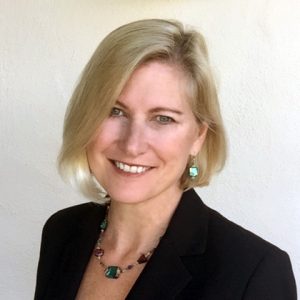A SOCAP Conversation with Diana Connolly and Eric Zimmerman
SOCAP has become a gathering place for investors, innovators and entrepreneurs committed to addressing climate change. And yet, as we meet we create a considerable carbon footprint and contribute to the very problem we’re trying to address. According to NASA’s Global Climate Change initiative, our global temperature has risen 1.4 degrees Fahrenheit since 1880. The National Oceanic and Atmospheric Administration (NOAA) announced that 2015 was the warmest year ever recorded.
This year SOCAP has partnered with TripZero to reduce the environmental impact of our conference. Attendees can now book your hotel room for SOCAP16 with TripZero (at a great discounted rate). TripZero will then measure and offset the carbon footprint of your trip to the conference, at no cost to you.
SOCAP’s Production Manager, Diana Connolly, also uses her expertise in green event planning to ensure that the event is produced in a way that aligns with our commitment to environmental responsibility.
We recently sat down with Diana Connolly and TripZero Founder Eric Zimmerman to talk about the surprising biggest factors driving climate change today, and their own approaches to reducing or even eliminating the carbon footprint.
What is the carbon footprint of an event like SOCAP, where over 2500 attendees convene for 3 days?
 Diana: Greenhouse gas emissions generated by an event come from three sources: activities generated by planning the event, electricity used at the event site, and the emissions generated by attendee travel. Of these three areas, about 85-95% of event GHG emissions come from attendee travel, and among this category, air travel is the primary contributing source.
Diana: Greenhouse gas emissions generated by an event come from three sources: activities generated by planning the event, electricity used at the event site, and the emissions generated by attendee travel. Of these three areas, about 85-95% of event GHG emissions come from attendee travel, and among this category, air travel is the primary contributing source.
In sustainability management & reporting, activities that are under the direct control of the show managers are called Scope 1 and Scope 2 activities. Scope 3 activities are the result of the event, but are not under the direct control, which unfortunately makes it trickier to manage. Attendee air travel is considered a Scope 3 activity.
Greenhouse gas emissions generated by an event come from three sources: activities generated by planning the event, electricity used at the event site, and the emissions generated by attendee travel. Of these three areas, about 85-95% of event GHG emissions come from attendee travel, and among this category, air travel is the primary contributing source.
Eric: We’ve analyzed the travel requirements of SOCAP attendees and estimate that the event’s footprint exceeds 2,800 metric tons of C02. So, in just three days, the event has a footprint that’s equivalent to 900 midsize cars driven for an entire year. It’s a big footprint, but not atypical. This is a compelling event that draws participants from across the country and around the globe.
Are there metrics for measuring GHG emissions at events?
Diana: In sustainability planning and reporting, a green event program uses a Metric-Ton- Per- Attendee ratio for goal setting and tracking results.
The two largest ways to improve the ratio are 1) increase your number of attendees without adding impact, and 2) reduce your impact.
At SOCAP, we use live streaming and session archiving to add attendees and extend our community content without adding impact. We live-stream all main stage content, and record significant sessions for people to view at home.
Reducing our impact is the next area to focus on. Our SOCAP event draws relatively little electricity. And, because our venue, Fort Mason, has installed a massive solar array on its campus, our Scope 1 and 2 impacts are very small. To make a difference, we need to address Scope 3 activity: Attendee Air Travel.
How do you mitigate the carbon footprint of air travel?
Eric: Although we’re all hoping for a major leap forward in jet fuel innovation, I expect that carbon offsets will be the answer for a long time to come. On the good news front, many of the carbon projects we work with go well beyond carbon offsetting. The social and economic benefits that they create can have a huge positive impact on local communities.
Is it really the responsibility of event organizers to worry about air travel impact?
Diana: Air travel, the largest contributor to GHG emissions for events, is the elephant in the room that no one wants to talk about. The answer is yes: Scope 3 activities are included in sustainability program guidelines and sustainability reporting instruments such as the GRI event planners supplement, the ISO 14000, and the APEX/ASTM green meeting event standards.
In 2013 and 2014 we included a link on our registration page that made it very easy for attendees to electively offset their air travel via carbon offset partners. Unfortunately not many people opted in. We were a bit discouraged. This is why we are pleased to be working with TripZero this year to help us. Together, we are focused on the group of attendees with the highest impact: those who are coming in from the further distances and staying in our local hotel blocks.
Eric: Based on our experience, lots of conference directors see their event’s carbon footprint as a major problem that they need to address. Even if they weren’t bothered by it at a personal level–and they are–a huge footprint often runs directly counter to the values of the group they’re bringing together. So there’s an opportunity here to both fix a big problem and advance the values of an event’s attendees.
So conference organizers can lead by example?
Eric: Exactly. Attendees come to network, to share ideas and to learn. Which means that conference organizers have an incredible opportunity to educate them by running a visibly sustainable event. People listen to what you say, but they pay really close attention to what you do. When a conference organizer weaves sustainability into the workings of an event, attendees take notice. And these same attendees are the thought-leaders and influencers who bring new ideas and practices back to their organizations–so the ideas spread.
Eric, can you explain how TripZero approaches the problem?
Eric: We’re a sustainable travel company (and Certified B Corp) with a unique model. We operate an event planning business that erases the travel footprint created by a conference–at no cost to attendees or the event organizer.
Like every travel agency on the planet, we earn a commission when attendees book hotel rooms. And unlike any other travel company, we use that commission to fund the purchase of certified carbon offsets.
In a nutshell, here’s how it works. Our first job is to arrange for blocks of hotel rooms that conference attendees can access at significantly discounted rates. Then we create a custom travel portal for the event that enables attendees to measure and register their carbon footprint for free offsetting. While they’re on the site, they can learn about how carbon offset projects work and about some of the additional benefits that they’re helping to create. And, of course, they can book one of those discounted hotel rooms.
Like every travel agency on the planet, we earn a commission when attendees book hotel rooms. And unlike any other travel company, we use that commission to fund the purchase of certified carbon offsets. Those offsets fund reforestation and renewable energy projects that remove C02 from the atmosphere. So as attendees book hotel rooms, they’re simultaneously erasing their travel footprint and supporting the types of projects that we’d all like to see more of.
Can you explain for us how carbon offsets work?
Eric: Carbon offsets are financial certificates sold to finance the activities of carbon projects. These projects either remove C02 from the atmosphere or prevent its release into the atmosphere. And they come in all shapes and sizes.
One of my favorites is a forest protection program in Kenya run by Wildlife Works. It’s protecting 500,000 acres of threatened forests and creating hundreds of jobs for the local community. As these forest grow, they absorb C02 from the atmosphere. For every metric ton that’s absorbed, the project can issue a single carbon offset certificate. We, in turn, can purchase that certificate to offset the impact of a customer’s flight.
Another favorite is a wind power project in Indiana built by Native Energy. A local school system wanted to switch to clean energy, but lacked the capital to construct its own wind turbines. The sale of carbon offsets provided financing that made the project possible and prevented the release of 39,000 tons of C02 into the atmosphere. As an added benefit, these turbines improve regional air quality by reducing the use of dirty fossil fuels.
So, when an attendee from Boston registers her trip (for free) at the SOCAP16 travel site, TripZero will purchase two certified carbon offsets to erase the two metric tons of C02 that her trip creates. And we’ll all get the satisfaction of supporting some very worthwhile carbon projects.
What else is SOCAP doing to produce a socially and environmentally responsible event?
Diana: A lot! As production manager, a big part of my job is making sure we partner with the right suppliers and partners to keep in alignment with our mission and values. Please check out my blog, Green Event Planning: Sustainability at SOCAP, to learn about the measures we took to reduce environmental impact and foster social responsibility for SOCAP15.
This year SOCAP will build on those measures, and we’ve partnered with TripZero to make SOCAP16 our greenest event yet.
As research is conducted and solutions are tested and applied, scientists agree that we must all collectively work together to reduce our carbon footprint to limit climate change as much as possible.




